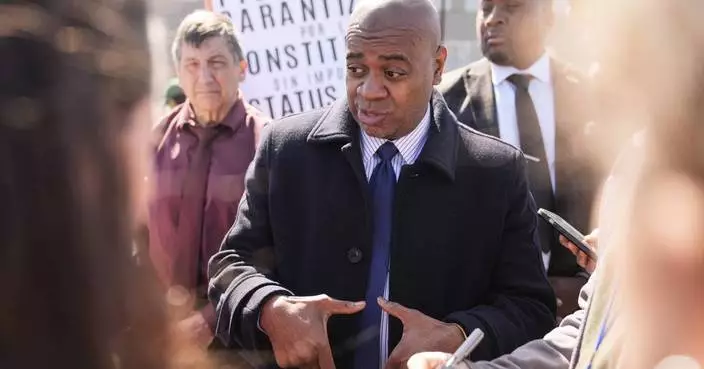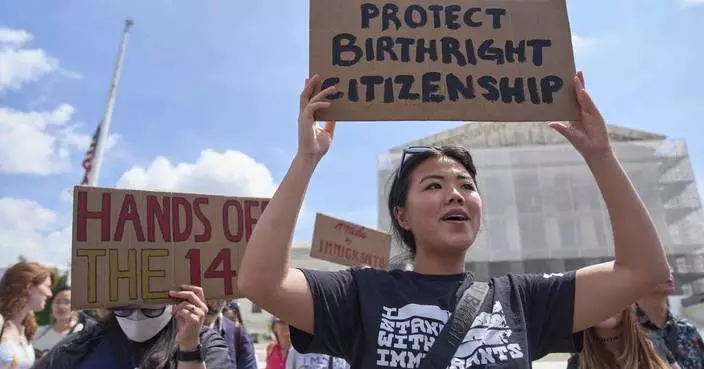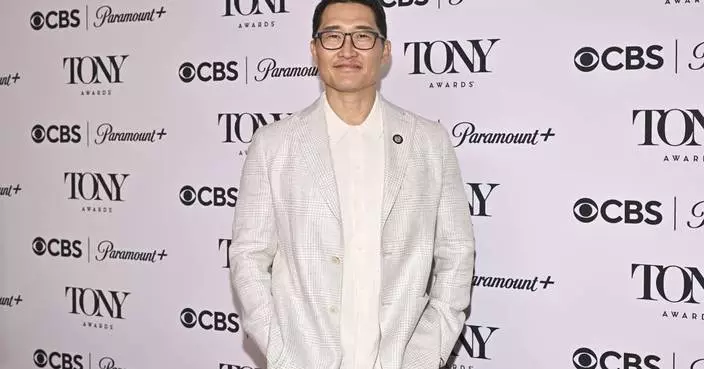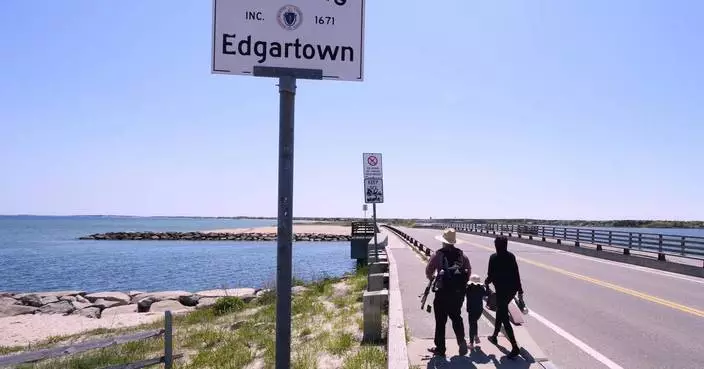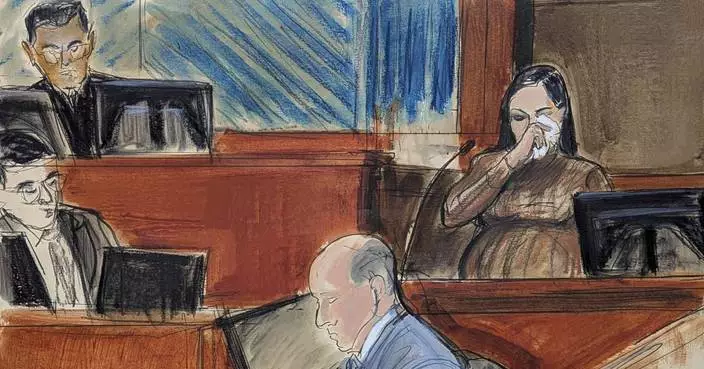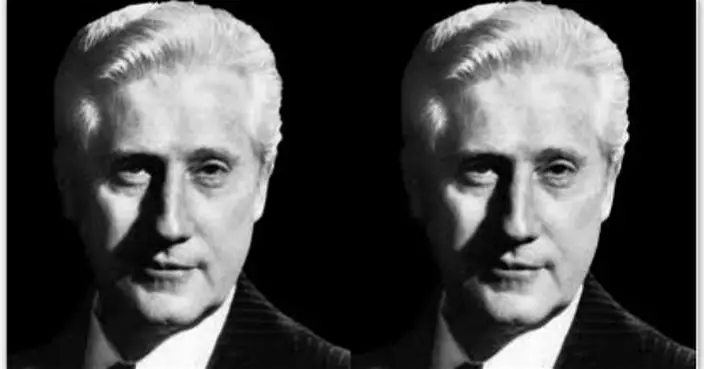METAIRIE, La. (AP) — New Orleans Saints career sack leader Cameron Jordan, an eight-time Pro Bowler and 2017 AP All-Pro, sounds intent on dealing with his new reality as gracefully as possible.
The 35-year-old Jordan, now in his 14th NFL season, played a career low 20 of 72 defensive snaps during the Saints' 15-12 loss to Philadelphia last Sunday. That's after playing 34 of 70 defensive snaps in a victory at Dallas and 27 of 59 in a season-opening victory over Carolina. That's about 40% of all defensive snaps this season.
Such usage makes these times markedly different for Jordan, who has been a reliable every-down defensive end for most of his previous 13 seasons.
Whatever Jordan's private feelings about this development may be, he made it clear this week that complaining about it is not what the team needs from a defensive captain like him.
“This is an opportunity to show what a leader I am,” Jordan said as New Orleans prepared to face the Atlanta Falcons on Sunday.
“There’s no entitlement here," Jordan continued. “Each and every day you’ve got to come out here and work and earn it. As a team we’re trying to win. Personal feelings has always been to the side.”
Five years ago, Jordan was as fearsome as any defensive end in the NFL. He had a career-high 15 1/2 sacks in 2019. In 2017, he complemented his 13 sacks by repeatedly batting or tipping passes, including one to himself in the end zone for a touchdown.
Jordan also has been effective against the run throughout his career. And he has been durable, missing just two games in the previous 13 season — one of those because of COVID-19 and one because of an injury.
Last season, Jordan had two sacks, his fewest since he had only one as a rookie in 2011. But coaches credited him for playing through injuries for much of the season.
Now, however, Jordan is taking a back seat to ends Carl Granderson and Chase Young in the playing rotation, and coach Dennis Allen, who designs and calls the defense, said this week that it might stay that way for a while.
“It’s no disrespect or anything negative towards Cam,” Allen said while asserting that Jordan remains a “vital part” of the defense. "That’s just kind of how this game goes at some point in time.”
So far this season, Jordan has usually subbed in for a defensive tackle in passing situations — part of what the Saints call their “NACAR package,” which features three pass-rushing defensive ends on their four-man front.
“At the end of the day, it’s always, ‘What more can I do for my team? What can I do for my teammates?’” Jordan said. “And you have to embrace your new role. You’ve got to embrace every opportunity you’re given.”
While the Saints' defense has been effective as a unit with Jordan on the field, he doesn't have any sacks, tackles for loss or QB hurrries to show for it through the season's first three games.
“Cam's a pro. He'll be a pro about it,” veteran safety Tyrann Mathieu said. “The competitor in him, obviously, it's probably a little heavy on him, weighing on him.”
But Mathieu emphasized that Jordan's value isn’t tied exclusively to his ability to disrupt quarterbacks.
"He adds a lot of value in leading the young guys in his room and being that extension from coaches to players," Mathieu said.
“He shouldn’t feel down about himself. He’ll be in the Hall of Fame one day. But I think this is part of his story, just kind of embracing that new role,” Mathieu continued. ”Cam has given his all to this organization and this city. You root for guys like that. You want them to succeed. You want guys like that to be happy no matter what."
AP NFL: https://apnews.com/hub/nfl

Philadelphia Eagles quarterback Jalen Hurts (1) passes over the reach of New Orleans Saints defensive end Cameron Jordan (94) in the second half of an NFL football game in New Orleans, Sunday, Sept. 22, 2024. (AP Photo/Gerald Herbert)
WASHINGTON (AP) — The Supreme Court on Thursday weighed whether to allow President Donald Trump’s restrictions on birthright citizenship to temporarily take effect in most of the country, even if they might ultimately be found to violate the Constitution.
The justices heard arguments in the Trump administration's emergency appeals over lower court orders that have kept the citizenship restrictions on hold across the country. Nationwide, or universal, injunctions have emerged as an important check on Trump's efforts to remake the government and a mounting frustration to the Republican president and his allies.
Judges have issued 40 nationwide injunctions since Trump began his second term in January, Solicitor General D. John Sauer told the court at the start of more than two hours of arguments.
Birthright citizenship is among several issues, many related to immigration, that the administration has asked the court to address on an emergency basis, after lower courts acted to slow the president’s agenda.
The justices are also considering the Trump administration’s pleas to end humanitarian parole for more than 500,000 people from Cuba, Haiti, Nicaragua and Venezuela and to strip other temporary legal protections from another 350,000 Venezuelans. The administration remains locked in legal battles over its efforts to swiftly deport people accused of being gang members to a prison in El Salvador under an 18th century wartime law called the Alien Enemies Act.
Trump signed an executive order on the first day of his second term that would deny citizenship to children who are born to people who are in the country illegally or temporarily.
The order conflicts with a Supreme Court decision from 1898 that held that the Citizenship Clause of the 14th Amendment made citizens of all children born on U.S. with narrow exceptions that are not at issue in this case.
States, immigrants and rights group sued almost immediately, and lower courts quickly barred enforcement of the order while the lawsuits proceed.
The current fight is over the rules that apply while the lawsuits go forward.
The court's liberal justices seemed firmly in support of the lower court rulings that found the changes to citizenship that Trump wants to make would upset the settled understanding of birthright citizenship that has existed for more than 125 years.
Birthright citizenship is an odd case to use to scale back nationwide injunctions, Justice Elena Kagan said. "Every court has ruled against you,” she told Sauer.
But if the government wins on today’s arguments, it could still enforce the order against people who haven’t sued, Kagan said. “All of those individuals are going to win. And the ones who can’t afford to go to court, they’re the ones who are going to lose,” she said
Several conservative justices who might be open to limiting nationwide injunctions also wanted to know the practical effects of such a decision as well as how quickly the court could reach a final decision on the Trump executive order.
Justice Brett Kavanaugh pressed Sauer with a series of questions about how the federal government might enforce Trump’s order.
“What do hospitals do with a newborn? What do states do with a newborn?” he said.
Sauer said they wouldn’t necessarily do anything different, but the government might figure out ways to reject documentation with “the wrong designation of citizenship.”
Kavanaugh continued to press for clearer answers, pointing out that the executive order only gave the government about 30 days to develop a policy. “You think they can get it together in time?” he said.
The Trump administration, like the Biden administration before it, has complained that judges are overreaching by issuing orders that apply to everyone instead of just the parties before the court.
Justice Sonia Sotomayor was among several justices who raised the confusing patchwork of rules that would result if the court orders were narrowed and new restrictions on citizenship could temporarily take effect in 27 states.
Some children might be “stateless,” Sotomayor said, because they'd be denied citizenship in the U.S. as well as the countries their parents fled to avoid persecution.
New Jersey Solicitor General Jeremy Feigenbaum, representing 22 states that sued, said citizenship could “turn on and off” for children crossing the Delaware River between Camden, New Jersey, where affected children would be citizens, and Philadelphia, where they wouldn't be. Pennsylvania is not part of the lawsuit.
One possible solution for the court might be to find a way to replace nationwide injunctions with certification of a class action, a lawsuit in which individuals serve as representatives of a much larger group of similarly situated people.
Such a case could be filed and acted upon quickly and might even apply nationwide.
But under questioning from Justice Amy Coney Barrett and others, Sauer said the Trump administration could well oppose such a lawsuit or potentially try to slow down class actions.
Supreme Court arguments over emergency appeals are rare. The justices almost always deal with the underlying substance of a dispute.
But the administration didn't ask the court to take on the larger issue now and, if the court sides with the administration over nationwide injunctions, it's unclear how long inconsistent rules on citizenship would apply to children born in the United States.
A decision is expected by the end of June.
Follow the AP's coverage of the U.S. Supreme Court at https://apnews.com/hub/us-supreme-court.
![Tanjam Jacobson, of Silver Spring, Md., holds a sign saying "Citizenship is a Birthright," Thursday, May 15, 2025, outside the Supreme Court in Washington. Jacobson is a naturalized U.S. citizen who was born in England of Indian descent, and her son was born here. "This is something that really matters," says Jacobson, "it's so wrong against the constitution [to take away birthright citizenship]." (AP Photo/Jacquelyn Martin)](https://image.bastillepost.com/1200x/wp-content/uploads/global/2025/05/2c495cddc1436e21a9fa976d295dc292_Supreme_Court_Birthright_Citizenship_26310.jpg.webp)
Tanjam Jacobson, of Silver Spring, Md., holds a sign saying "Citizenship is a Birthright," Thursday, May 15, 2025, outside the Supreme Court in Washington. Jacobson is a naturalized U.S. citizen who was born in England of Indian descent, and her son was born here. "This is something that really matters," says Jacobson, "it's so wrong against the constitution [to take away birthright citizenship]." (AP Photo/Jacquelyn Martin)
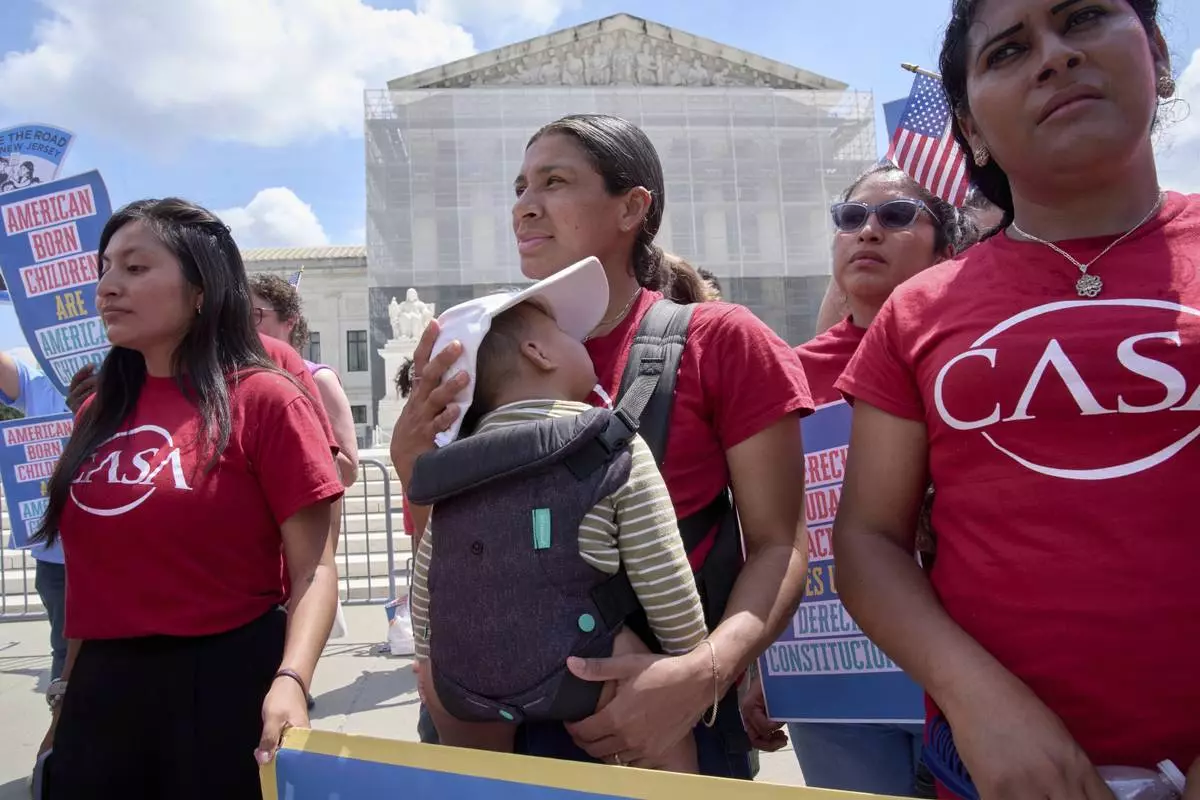
A woman from CASA Maryland holds her 9-month-old baby as she joins others in support of birthright citizenship, Thursday, May 15, 2025, outside of the Supreme Court in Washington. (AP Photo/Jacquelyn Martin)




![Tanjam Jacobson, of Silver Spring, Md., holds a sign saying "Citizenship is a Birthright," Thursday, May 15, 2025, outside the Supreme Court in Washington. Jacobson is a naturalized U.S. citizen who was born in England of Indian descent, and her son was born here. "This is something that really matters," says Jacobson, "it's so wrong against the constitution [to take away birthright citizenship]." (AP Photo/Jacquelyn Martin)](https://image.bastillepost.com/1200x/wp-content/uploads/global/2025/05/2c495cddc1436e21a9fa976d295dc292_Supreme_Court_Birthright_Citizenship_26310.jpg.webp)


